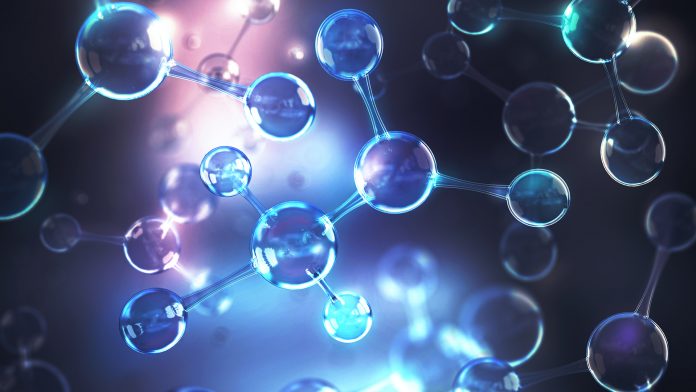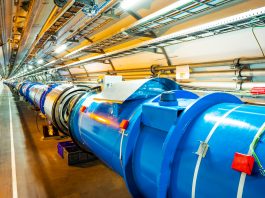In a world first, the ALPHA collaboration at CERN has successfully cooled down antihydrogen atoms – the simplest form of atomic antimatter – using laser light.
The technique used, known as laser cooling, was demonstrated on normal matter 40 years ago, and is now central to many research fields. However, this is its first application to antimatter.
The results, described in a paper in Nature, pave the way for more precise studies of the internal structure of antihydrogen and of how it acts under the influence of gravity.
By contrasting the results of the antihydrogen atom to the hydrogen atom, researchers may be able to reveal differences between matter and antimatter atoms. Such differences, if present, could shed light on why the universe is made up of matter only, an imbalance known as matter–antimatter asymmetry.
“The ability to laser-cool antihydrogen atoms is a game-changer for spectroscopic and gravitational measurements, and it could lead to new perspectives in antimatter research, such as the creation of antimatter molecules and the development of anti-atom interferometry,” commented ALPHA spokesperson, Jeffrey Hangst. “We are over the moon. About a decade ago, laser cooling of antimatter was in the realm of science fiction.”
The ALPHA team at CERN makes antihydrogen atoms by taking antiprotons from the Antiproton Decelerator and binding them with positrons originating from a sodium-22 source.
Then, the resulting antihydrogen atoms are restricted to a magnetic trap, which prevents them from encountering matter and annihilating.
Next, the team usually performs spectroscopic studies, that is, it measures the anti-atoms’ response to electromagnetic radiation, laser light, or microwaves. These studies have enabled the team to conduct research such as measuring the 1S–2S electronic transition in antihydrogen with unprecedented precision.
However, the precision of such spectroscopic measurements and of planned future measurements of the behaviour of antihydrogen in the Earth’s gravitational field in ongoing experiments is limited by the kinetic energy or, equivalently, the temperature, of the antiatoms. This is where the laser cooling technique becomes invaluable.
In this technique, laser photons are absorbed by the atoms, causing them to reach a higher-energy state. The anti-atoms then emit the photons and spontaneously decay back to their initial state.
As the interaction depends on the atoms’ velocity and as the photons impart momentum, repeating this absorption–emission cycle many times leads to cooling of the atoms to a low temperature.
In this study, the researchers found that they could laser-cool a sample of magnetically trapped antihydrogen atoms by repeatedly driving the anti-atoms from the atoms’ lowest-energy state (the 1S state) to a higher-energy state (2P) using pulsed laser light with a frequency slightly below that of the transition between the two states.
Once the trapped atoms had been illuminated for a few hours, the researchers detected a more than tenfold decrease in the atoms’ median kinetic energy, with many of the anti-atoms attaining energies below a microeletronvolt, which is approximately 0.012 degrees above absolute zero in temperature equivalent.
After successfully laser-cooling the anti-atoms, the researchers explored how the laser cooling affected a spectroscopic measurement of the 1S–2S transition, finding that the cooling led to a narrower spectral line for the transition – about four times narrower than that observed without laser cooling.
“Our demonstration of laser cooling of antihydrogen atoms and its application to 1S–2S spectroscopy represents the culmination of many years of antimatter research and developments at CERN’s Antiproton Decelerator. This is by far the most difficult experiment we have ever done,” added Hangst.
“Historically, researchers have struggled to laser-cool normal hydrogen, so this has been a bit of a crazy dream for us for many years,” says Makoto Fujiwara, the first proponent of the idea of using a pulsed laser to cool trapped antihydrogen in ALPHA. “Now, we can dream of even crazier things with antimatter.”









